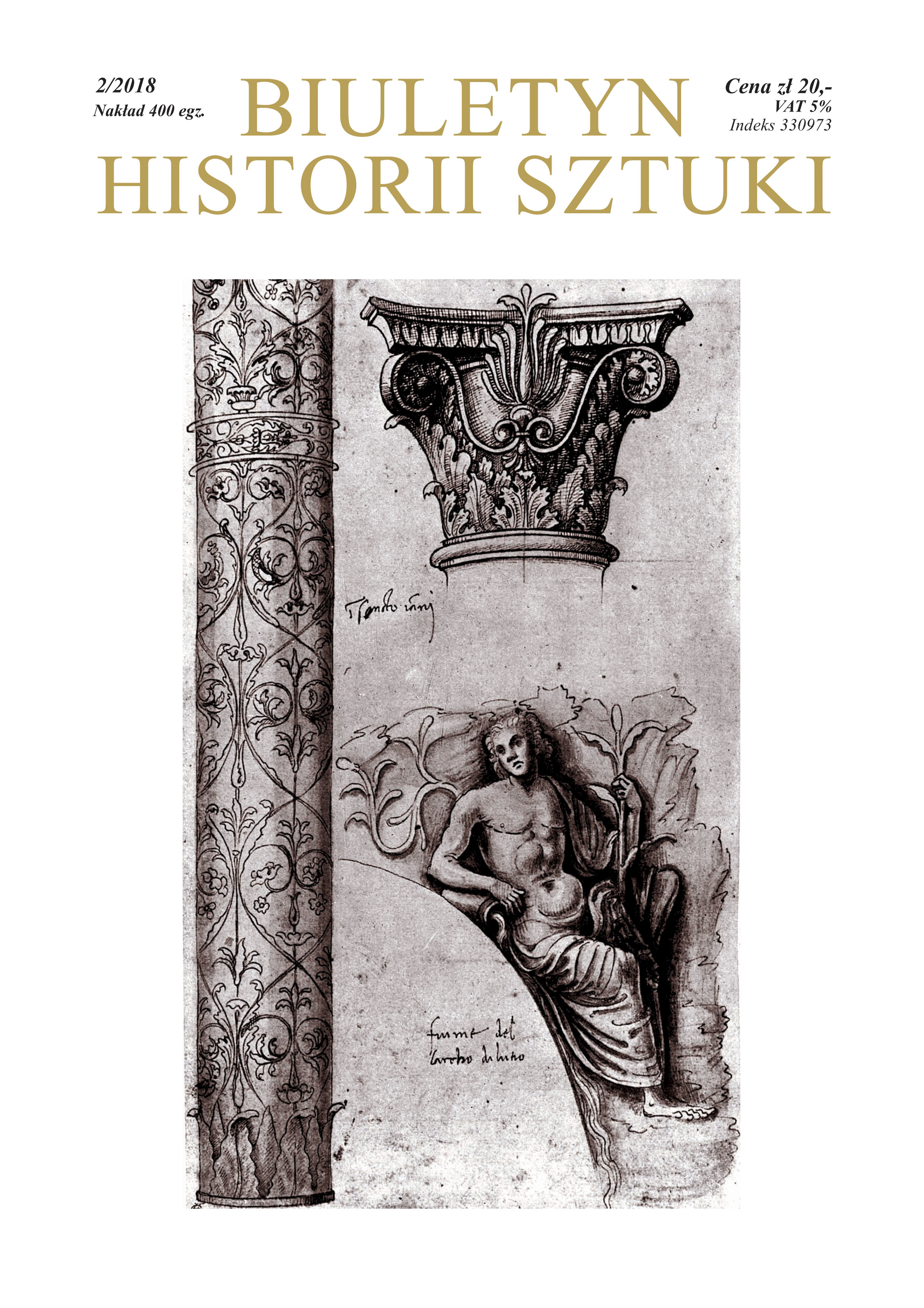„Voyage pittoresque” Jana Potokkiego i nieznane egipskie pendants z podróży do Turcji i Egiptu w 1784 roku
‘Voyage Pittoresque’ of Jan Potocki and an Unknown Egyptian Pendants from the Trip to Turkey and Egypt in 1784
Author(s): Mikołaj Baliszewski, Monika MuszyńskaSubject(s): Fine Arts / Performing Arts, Sociology of Art, History of Art
Published by: Instytut Sztuki Polskiej Akademii Nauk
Keywords: Voyage Pittoresque; Grand Tour; Jan Potocki (1761-1815); Trip to Egypt (1784); Orientalism in art; engraver Carl Guttenberg; engraver Heinrich Schmitz;
Summary/Abstract: Voyage Pittoresque of Jan Potocki and an Unknown Egyptian Pendant from the Trip to Turkey and Egypt in 1784 In the Wilanów collection of the National Library in Warsaw we have rediscovered three prints engraved after two lost drawings executed in August 1784 in Egypt by the outstanding Enlightenment writer and Orientalist Jan Potocki (1761-1815). The prints were titled: Vue des Piramides de Gissa and Vue de la Statue Colossale du Sphinx de Gissa. The first of them, an etching with a copperplate engraving, shows the Pyramids of Khufu and Khafre in Giza, and a caravan, seen in the foreground, heading towards the Great Pyramid. The second etching shows the Sphinx en face against the Pyramid of Mykerinos seen in the distant background. For many years the etchings docummenting the visit to Giza were regarded as lost. Copies of the prints served in the Potocki family in the 19th century as family mementoes. The one to mention them is Katarzyna Potocka née Branicki, wife of Adam Potocki, grandson of Jan, during the trip to Egypt in 1853. In a letter, following her visit to the pyramids on 30 March, she recorded: ‘We have also viewed the collosal Sphinx which is close to the pyramids. It interested me, as I have a print executed on site by Mr Jan Potocki, Adam’s grandfather’. This piece of information on the print showing the Sphinx should thus be connected with the other unique print preserved in the Wilanów collection. Both plates had been trimmed and framed in the Album called Melange (WAF. 797) in the times of Aleksander Potocki, namely in the 2nd quarter of the 19th century. They are the only known prints executed on the grounds of the drawings by the author of the Saragossa Manuscript during his lifetime. They remain inseparably related to his literary debut published without illustrations in 1788: Voyage en Turquie et en Egypte The print pendant, possibly executed in Paris and Düsseldorf in ca 1787 by the German engravers Carl Guttenberg and Heinrich Schmitz, in view of the presented epistolary material constituted mainly a beginning of a series of prints meant to compose an album of the voyage pittoresque type: the most fashionable publication category in the Grand Tour era. The genesis of both prints is reconstructed in the article, and so are the circumstances that influenced the shape of the planned publication, beginning with the trip to Turkey and Egypt, through the trip back to Poland, a short stay in Karlsbad, living in Paris, and the trip to Tuscany in 1786 when accompanying his mother-in-law Princess Izabella Lubomiska. She is presented as the instigator of the interests and undertakings of young Jan Potocki, additionally with possible conditionings. In the article the discussed prints and records of the trip shown in the context of the picturesque and sublime aesthetical trends of the time are presented. The interpretation of the ‘sublime’ style of the print presenting a view of the Great Pyramid, based on the commentary of Potocki himself, has been juxtaposed with the considerations of Immanuel Kant included in his Critique of the Power of Judgment (1790). In the part dedicated to the mathematical evaluation of grandeur as an element indispensable to perceive the sublime the latter quotes and develops Potocki’s idea. Through the analyses of the texts a direct dependence of the concept of the ‘mathematical sublime’ created by Kant on Potocki’s remarks included in the letter describing his visit to Giza, and published anonymously in the book Voyage en Turquie et en Egypte, is demonstrated.
Journal: Biuletyn Historii Sztuki
- Issue Year: 80/2018
- Issue No: 2
- Page Range: 303-327
- Page Count: 25
- Language: Polish
- Content File-PDF

